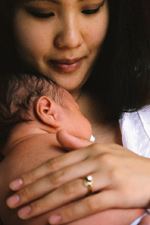
A woman lacking vital nutrients before and during pregnancy or using tobacco and alcohol during pregnancy faces a higher risk of pregnancy complications. Surprisingly, many of these same prenatal factors may also increase her child's risk of behavioral and learning disabilities and/or elevate the risk of future disease all the way from childhood to old age.
Prevention begins with education. It is vital that each young person appreciate how a woman's health and nutrition starting long before pregnancy can shape the lifelong health of her baby.
